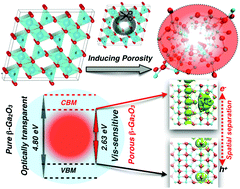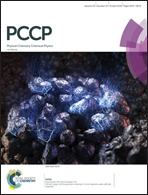Designing a porous-crystalline structure of β-Ga2O3: a potential approach to tune its opto-electronic properties†
Abstract
β-Ga2O3 has drawn recent attention as a state-of-the-art electronic material due to its stability, optical transparency and appealing performance in power devices. However, it has also found a wider range of opto-electronic applications including photocatalysis, especially in its porous form. For such applications, a lower band gap must be obtained and an electron–hole spatial separation would be beneficial. Like many other metal oxides (e.g. Al2O3), Ga2O3 can also form various types of porous structure. In the present study, we investigate how its optical and electronic properties can be changed in a particular porous structure with stoichiometrically balanced and extended vacancy channels. We apply a set of first principles computational methods to investigate the formation and the structural, dynamic, and opto-electronic properties. We find that such an extended vacancy channel is mechanically stable and has relatively low formation energy. We also find that this results in a spatial separation of the electron and hole, forming a long-lived charge transfer state that has desirable characteristics for a photocatalyst. In addition, the electronic band gap reduces to the vis-region unlike the transparency in the pure β-Ga2O3 crystal. Thus, our systematic study is promising for the application of such a porous structure of β-Ga2O3 as a versatile electronic material.



 Please wait while we load your content...
Please wait while we load your content...